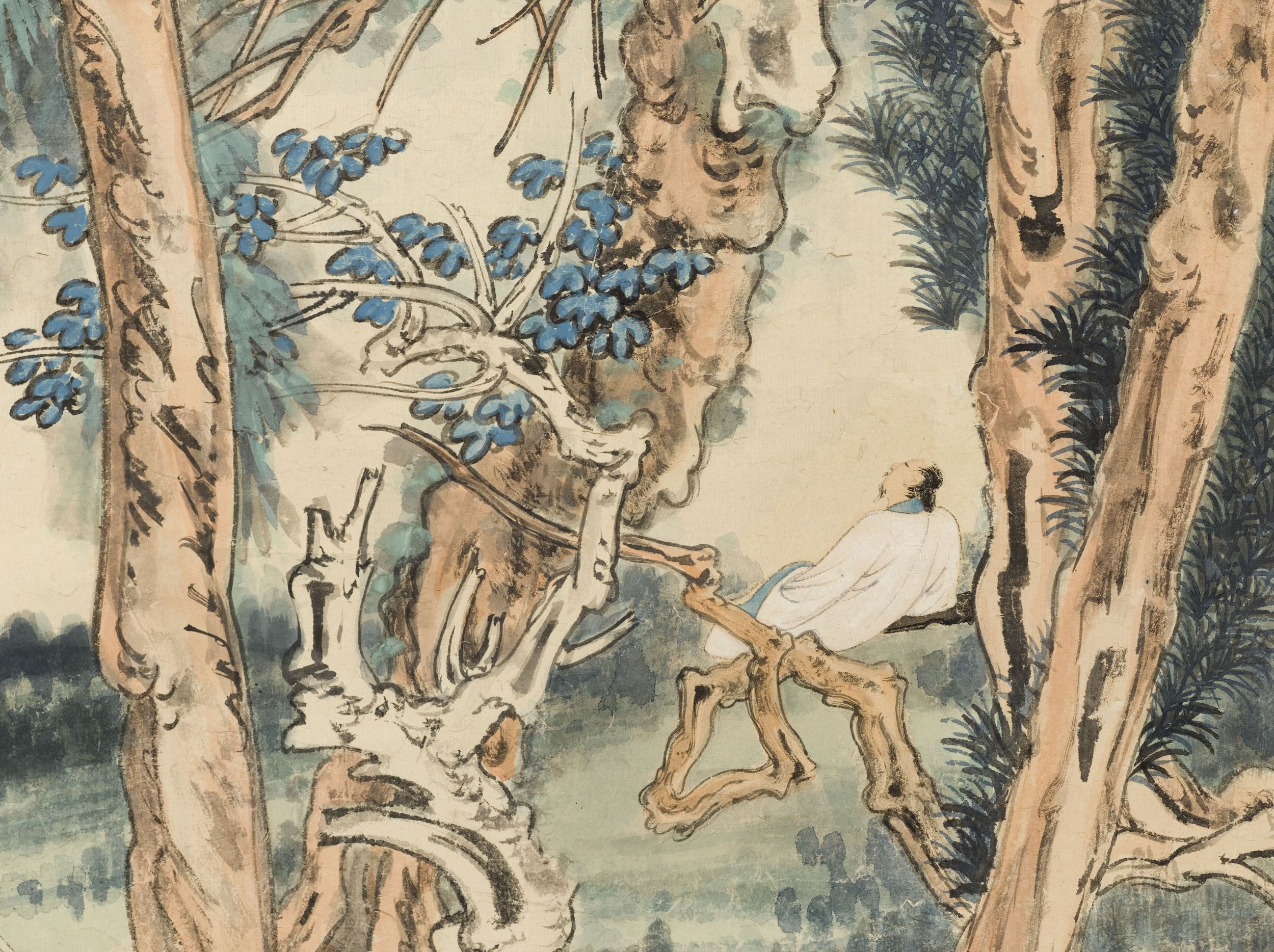
Ermite dans la forêt
Papier, Encre, Couleurs - Pigments
Peinture
大千居士爰; 張爰之印; 大千; 大千豪髮; 大風堂
Don manuel : Guo, Youshou 郭有守, Docteur
M.C. 8710
Inscription and signature: 少有道氣,終興俗違。亂山喬木,碧苔芳暉。乙西七月初三日聞佞寇來降寫此快極。大千居士爰。
Painter’s seals: 1. 張爰之印 (白文) 2. 大千 (朱文) 3. 大千豪髪 (白文) 4. 大風堂 (朱文)
Translation:
“In my youth, I had the spirit of the Tao
In the end, I retreated from the world.
Amid the rugged mountains, [among] the great trees,
Green moss, fragrances and light.”
The third day of the seventh month of the Yiyou year [1945], on learning with joy that the Japanese capitulation is near. The hermit Daqian, Yuan.
The lines accompanying this painting evoke the artist’s personal and direct relationship with nature. They are borrowed from the poet and critic Sikong Tu 司空圖 (837-908) who lived in the Tang period. Similarly, the composition of the landscape is a complex reinterpretation of various ancient works. The lone figure lost among the trees and contemplating a waterfall is derived from a painting by Chen Hongshou in the Cleveland Museum of Art. But Chen Hongshou’s painting technique is very different to that of Zhang Daqian. Instead of the Ming master’s angular lines for the mountains, Zhang Daqian opts for a series of ridges and dots derived from Song models. The source of inspiration for the tall jagged pines, absent from the work of Chen Hongshou, was probably Wang Shen 王詵 (circa 1048-circa 1103) from the Song period. Indeed, there is a fake Wang Shen by Zhang Daqian resembling ancient-style copy of this painting in the Cernuschi Museum. The connection between this fake and Chen Hongshou’s painting had been re-established by Fu Shen, who pointed out the confusing aspects of Zhang Daqian’s work. The meeting of a Ming-era composition and a style derived from the Song era had resulted simultaneously in the production of a fake Song, painted on aged silk, and an original painting by Zhang Daqian, on paper. The fresh polychrome of the leaves and the stylised execution of the trees give the latter a modern tonality. The scholar is portrayed, not sitting as in Chen Hongshou’s work, but in a semi-reclining position, typical of Zhang Daqian, as he looks at the waterfall.
